#infanta sofia of spain's confirmation
Text

New : Infanta Sofía of Spain will be confirmed in the Roman Catholic Church in Madrid, alongside her classmates on May 25th 2023.
The students from Santa María de los Rosales School will take the Holy Sacrament at the parish of Asunción de Nuestra Señora de Aravaca near the school -March 12th 2023.
#infanta sofia#spanish royal family#spain#2023#march 2023#confirmation#confirmation 2023#infanta sofia of spain's confirmation#royal children#my edit
32 notes
·
View notes
Text
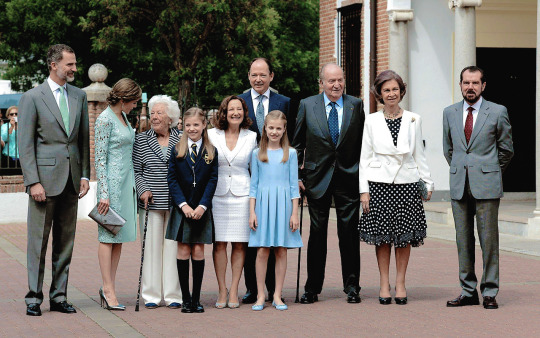

2017 -> 2023 | The Spanish Royal Family celebrates the baby of the family's religious milestones.
On 17 May 2017, Infanta Sofía of Spain's First Communion was attended by King Felipe VI, Queen Letizia, The Princess of Asturias, King Juan Carlos, Queen Sofía, María del Carmen "Menchu" Álvarez del Valle (Queen Letizia's paternal grandmother), Paloma Rocasolano, Jesus Ortiz (Queen Letizia's parents), and Konstantin of Bulgari (Sofía's godfather).
On 25 May 2023, Infanta Sofía of Spain's Sacrament of Confirmation was attended by King Felipe VI, Queen Letizia, The Princess of Asturias, Queen Sofía, Paloma Rocasolano, and Jesus Ortiz.
In 2021, Queen Letizia's grandmother, Menchu passed away at 93.
#spanish royal family#princess leonor#infanta sofia#princess of asturias#infanta sofía#queen letizia#king felipe vi#infanta sofía of spain#sofia's confirmation#Sofia's first communion#25 may 2023#17 may 2017#queen sofia#king Juan carlos#my edit
49 notes
·
View notes
Photo





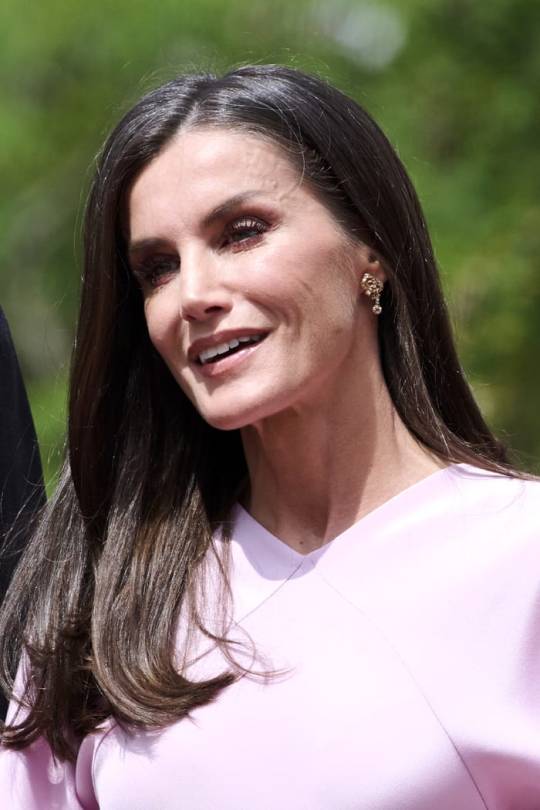




May 25, 2023: King Felipe, Queen Letizia and Princess Leonor attended Infanta Sofia ’s Confirmation at the Asuncion de Nuestra Senora Church in Madrid.
#King Felipe#Queen Letizia#Princess Leonor#Infanta Sofia#King Felipe of Spain#Queen Letizia of Spain#Princess Leonor of Asturias#Infanta Sofia of Spain#King Felipe VI#Princess of Asturias#King Felipe VI of Spain#Sofia's Confirmation#May 2023
37 notes
·
View notes
Text

🇯🇴 Confirmations for the wedding of Crown Prince Hussein and Rajwa Al Saif:
🇩🇰 Crown Prince Frederik and Crown Princess Mary
🇸🇪 Crown Princess Victoria and Prince Daniel
🇳🇴 Crown Prince Haakon
🇯🇵 Princess Hisako and Princess Tsuguko
🇲🇾 King Abdullah and Queen Raja of Malaysia
🇳🇱 King Willem-Alexander, Queen Maxima, and The Princess of Orange
🇱🇺 Prince Sebastien of Luxembourg
🇪🇸 King Juan Carlos and Queen Sofia, and Infanta Elena of Spain
🇧🇪 King Philippe and The Duchess of Brabant
🇷🇴 Margareta, Custodian of the Crown, and Prince Radu of Romania
🇬🇧 The Prince and Princess of Wales
#jordanian royal family#crown prince hussein#rajwa al saif#crown princess mary#crown prince frederik#crown prince haakon#prince daniel#danish royal family#swedish royal family#norwegian royal family#crown princess victoria#princess takamado#japanese imperial family#dutch royal family#queen maxima#king willem alexander#princess of orange#princess catharina amalia#grand ducal family of luxembourg#prince sebastian of luxembourg#jordanian royal wedding#belgian royal family#king philippe#princess elisabeth#duchess of brabant#british royal family#prince william#princess of wales#prince of wales
150 notes
·
View notes
Photo

Infanta Sofia of Spain arrives for her confirmation at the Asuncion de Nuestra Señora Church in the municipality of Aravaca | May 25, 2023
89 notes
·
View notes
Photo


Warm moments between royals: 930/∞
May 25, 2023 | Princess Leonor looks after her grandmother, Queen Sofia, at the confirmation of Infanta Sofia in Madrid, Spain.
#queen sofia#princess leonor#spanish royal family#may 2023#warm moments between royals#my post#series#sofia's confirmation 2023#royal grandparents
64 notes
·
View notes
Text


Infanta Sofia arrives for her confirmation of Asuncion de Nuestra Señora church in Madrid, Spain | May 25th, 2023
36 notes
·
View notes
Photo
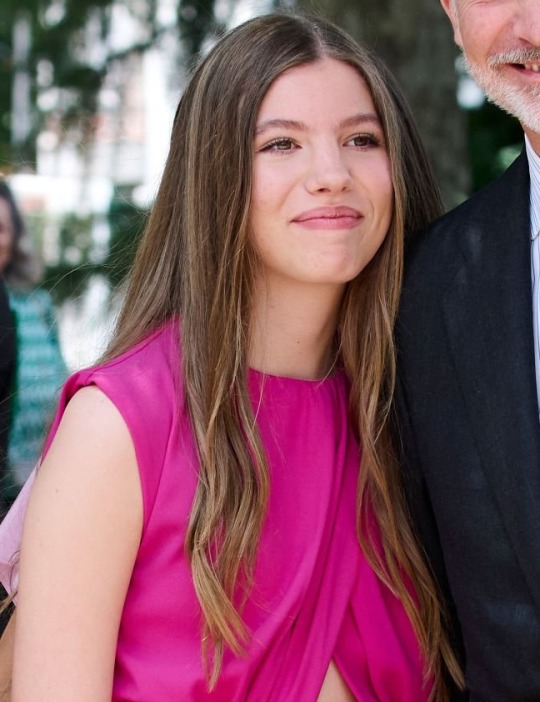
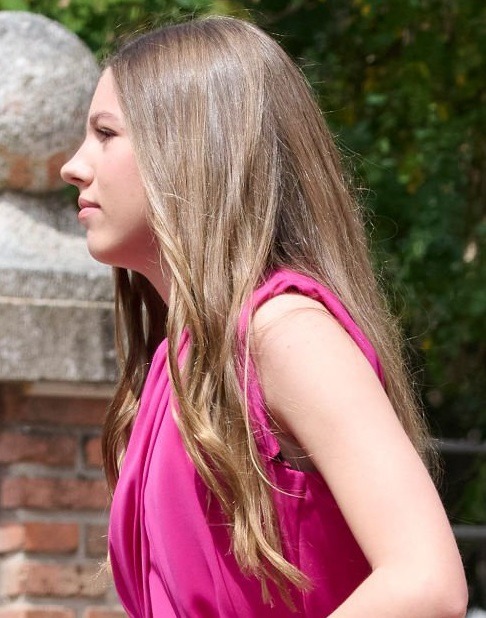



Infanta Sofia of Spain at her confirmation at the Church of the Assumption of Our Lady of Aravaca in Madrid - 25.05.23
15 notes
·
View notes
Text
What is the Spanish monarchy system?
The government of Spain or Spanish government (Spanish: Monarquía Española), naturally alluded to as The Crown (Spanish: La Crown), is a sacred establishment and the most elevated office of Spain.[1] The government contains the prevailing ruler, their family, and the imperial family association which upholds and works with the ruler in the activity of his obligations and prerogatives.What is the Spanish monarchy system? The Spanish government is right now addressed by Lord Felipe VI, Sovereign Letizia, and their girls Leonor, Princess of Asturias, and Infanta Sofía.
The Spanish Constitution of 1978 re-established[note 1] a sacred government as the type of government for Spain after the finish of the Francoist system and the rebuilding of a majority rules government in 1977. The 1978 constitution confirmed the job of the ruler of Spain as the living representation and encapsulation of the Spanish State and an image of Spain's persevering through solidarity and perpetual quality and is likewise contributed as the "mediator and the arbitrator" of Spanish state institutions.[2][4] Unavoidably, the lord is the head of state and president of the Spanish Outfitted Forces.[2][4] The constitution classifies the utilization of illustrious styles and titulary, Imperial Rights, genetic progression to the crown, pay, and a regime guardianship possibility in instances of the ruler's minority or incapacitation.[2][4] As per the constitution, the ruler is additionally instrumental in advancing relations with the "countries of its verifiable community".[2][4] The ruler of Spain fills in as the leader of the Association of Ibero-American States, addressing north of 700,000,000 individuals in 24 part countries worldwide.[5][6] It is the final government on the European Mediterranean coast (aside from Monaco).
History of the Spanish Government
Does Spain have a ruler? While most understudies realize that Sovereign Elizabeth II is the head of Britain, they may be shocked to discover that of the 195 nations in presence starting around 2022, 43 of them have governments. Spain is one of those 43 nations, as the top of the Spanish government is Above all else Felipe VI, who started his standard on June 19, 2014. His significant other is Sovereign Letizia. The other Spanish imperial family names incorporate two girls named Leonor, who is the Princess of Asturias, and the Infanta Sofia. The Princess of Asturias Grants are given out yearly to those people who are considered meriting beneficiaries. Curiously, the Spanish illustrious family has a heredity to the English regal family. Ruler Felipe VI of Spain and Sovereign Elizabeth II of Britain both are relatives of Sovereign Victoria of Britain.
The Umayyad attack from the years 711 to 718 brought about the triumph of the Iberian promontory. Accordingly, the foundations of the Spanish government can be followed to the Place of Jimenez, which was established in 835. The defining moment was the association of Castile and Aragon with Ferdinand and Isabela in 1479. The Reconquista took more than seven centuries until the Fall of Granada in 1492. The illustrious place of Ferdinand and Isabella made what is referred to now as the nation of Spain. The Habsburg Government of Austria stretched out to incorporate Habsburg Spain from 1516 to 1700. The Place of Whiskey has controlled for a large portion of the years from 1700 until current times. Spain was a fascism under Franciso Franco from 1939 to 1975.
Qualities of the Spanish government:
Disturbances in the Spanish government
Spain is a well established government, just interfered with during three periods: that of the Primary Republic (1873-1874), that of the Subsequent Republic (1931-1939) and during the Franco system (1939-1975).
Beginning of the Spanish government
Despite the fact that history specialists typically mark as the start of this government the individual and dynastic association of the alleged Catholic Rulers (Isabel I of Castile and Fernando II of Aragon), since the fifth century Hispania was controlled by the purported Hispanogoda government, political and lawful replacement from Rome on the Promontory.
A few lords of the Spanish government
Different lords succeeded each other during the long stretches of the Reconquest of the southern grounds of the Landmass, under Muslim rule; Alfonso VI and Alfonso VII of León and Castilla were some of them.
The treatment of "Catholics" of the lords Fernando, Isabel and their replacements was conceded by Pope Alexander VI in 1496, concerning serious areas of strength for the of Spain to the Catholic confidence, from that point forward and for quite some time. The Campaigns comprise the most over the top total illustration of this intense and unreasonable bond.
Targets of the Spanish government
The fundamental goals of the Catholic Rulers were, in issues of interior governmental issues, to accomplish the inside mollification of Spain (up to that point separated into a few realms) and to make a focal power; In issues of international strategy, it was a significant target to segregate France and extend the territories through undertakings to different regions of the planet. Large numbers of these excursions intended to the Spanish Crown the addition of provinces, from which they got significant wealth. This prompted the development of a genuine realm.
Relations of the Spanish government
In the Spanish government, various countries, different political practices and, surprisingly, a few dialects existed together. Unwaveringness to the ruler was the main component of attachment before all else.
0 notes
Text
Confirmed a case of coronavirus in the school of Princess Leonor and the Infanta Sofía of Spain.
8 notes
·
View notes
Text
Maria Francisca de Saboia, Queen of Portugal (Wife of King Afonso VI)
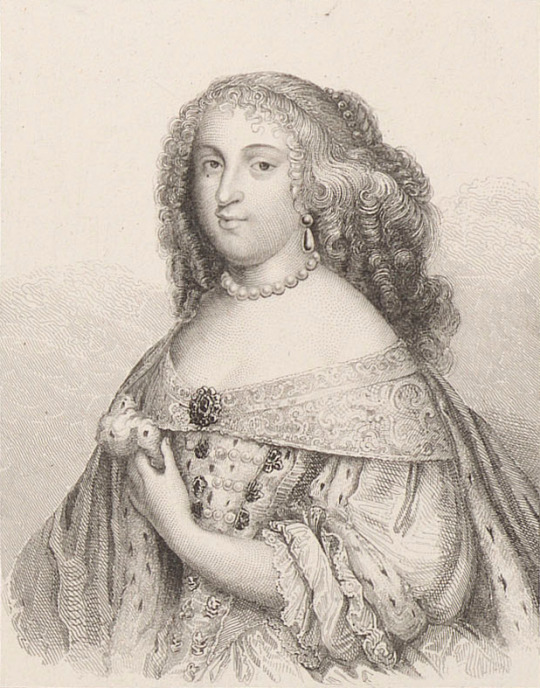
1st Tenure: 2 August 1666 – 24 March 1668
Maria Francisca of Savoy (21 June 1646 in Paris – 27 December 1683 in Lisbon) was twice queen consort of Portugal as the spouse of two Portuguese kings: Afonso VI and Pedro II of Portugal. She first became queen of Portugal at the age of 20 on the day of her marriage to Afonso VI; because the marriage was never consummated, she was able to obtain an annulment. On 28 March 1668, she married Afonso's brother, the Infante Pedro, Duke of Beja, who was appointed prince regent the same year due to Afonso's perceived incompetence. Maria Francisca became queen of Portugal for the second time when Pedro succeeded his brother as Pedro II in 1683 but died herself later that year.
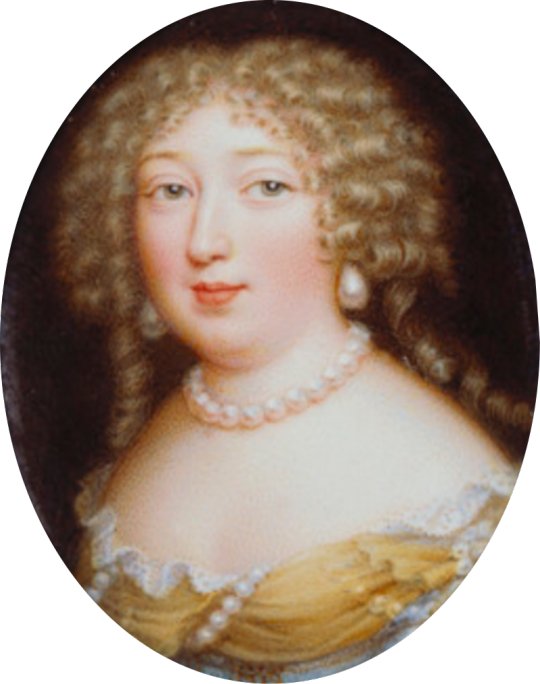
Maria Francisca was born in Paris as the younger daughter of Charles Amadeus, Duke of Nemours,
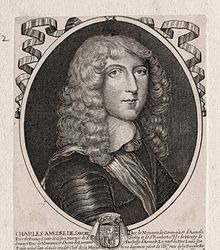
and Élisabeth de Bourbon.

Elisabeth was a granddaughter of Henry IV of France
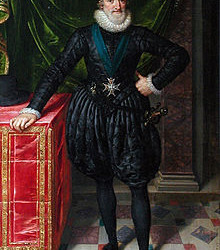
and his mistress Gabrielle d'Estrées.

Her only surviving sibling was Marie Jeanne of Savoy.

Prior to marriage she was styled Mademoiselle d'Aumale, a title derived from the duchy of Aumale which was a property of her father.
In 1581, Portugal and Spain had been united under Philip II, but domestic opposition led to the 1640 to 1668 Portuguese Restoration War. By the end of 1665, Spanish attempts to reconquer Portugal had clearly failed, while their finances had collapsed, the Crown declaring bankruptcy no less than nine times between 1557 and 1666.
This allowed Portuguese chief minister, Castelo Melhor, to focus on securing his own position. Afonso VI succeeded his father in 1653 but he was physically impaired and mentally unstable, with government controlled by his mother, Luisa de Guzmán. Guided by Castelo Melhor, Afonso sent her to a convent in 1662, where she died in February 1666.
The Portuguese government was split between pro-French and pro-English factions, respectively led by Castelo Melhor and Afonso's younger brother, Pedro. In 1662, Charles II of England married Afonso's sister Catarina; Castelo Melhor and Louis XIV
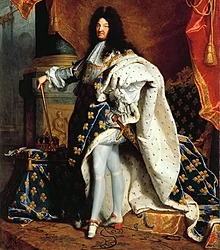
saw a marriage between Maria Francisca and Afonso as a way to offset that. Louis persuaded Charles to agree by providing him with the unpaid portion of Catarina's dowry; Maria arrived in Portugal on 2 August 1666 and the wedding took place the same day.
From then on, she became known as Maria Francisca Isabel de Sabóia, although the marriage proved a disappointment. Afonso abandoned the festivities early, leaving his new bride in charge, and reportedly displayed a similar lack of interest in consummating it. More importantly, Maria was an intelligent and resolute individual, who wanted to serve French interests but also rule; she soon discovered Afonso was controlled by Castelo Melhor, who had no intention of sharing power. This drove her to first co-operate with her brother-in-law Pedro, then allegedly begin an affair with him.
Although Castelo Melhor considered the marriage and the March 1667 Treaty of Lisbon with France as confirming his position, in fact they undermined it. Despite being financially exhausted, the treaty required Portugal to provide military support against Spain, while Maria persuaded Louis that Pedro was a better way to further French interests. In September, Castelo Melhor was forced into exile and in late November, Pedro deposed his brother, sending him to Terceira in the Azores. Maria retired to a convent and asked her marriage be annulled on the grounds of non-consummation; this was approved by her relative, French Cardinal Vendôme,

and she married Pedro in September 1668.
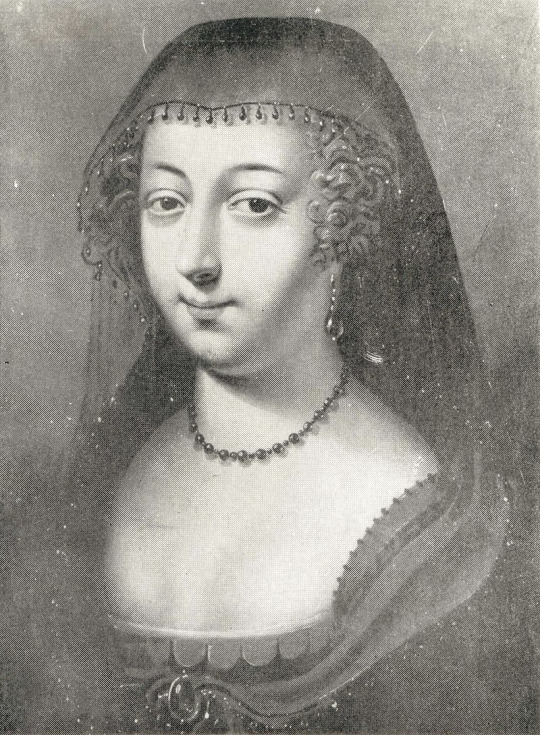
Months after her annulment, Maria Francisca married the Infante Pedro, now the Prince Regent of Portugal. In 1669 she gave birth to a daughter, Isabel Luísa Josefa of Portugal, Princess of Beira.

The Bragança dynasty was at the brink of extinction, and Pedro needed heirs, yet Maria Francisca was unable to produce further issue.
When Afonso died in 1683, Pedro succeeded him as Pedro II of Portugal and Maria Francisca became queen again—but died in December of the same year. Maria Francisca's only child, the Infanta Isabel Luísa, died unmarried at age 22. Pedro remarried to Maria Sofia of the Palatinate, who produced the much-needed heir, the future João V of Portugal.
She was first buried at the Convent of the Francesinhas, then moved in 1912 to the Braganças' (or National) Pantheon at the Monastery of São Vicente de Fora.
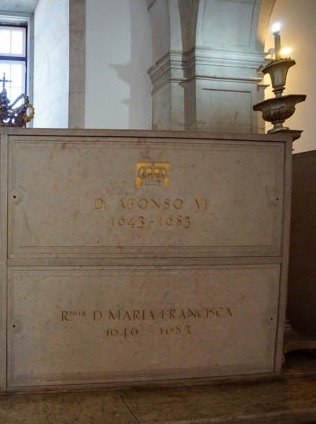
7 notes
·
View notes
Text

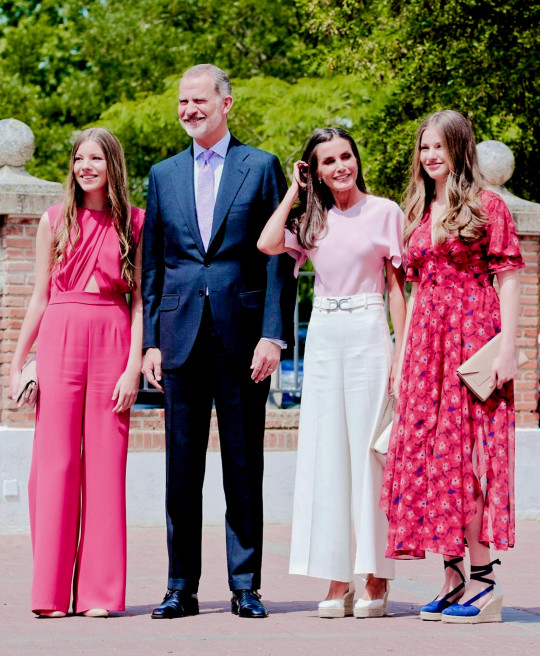

King Felipe VI of Spain, Queen Letizia of Spain, Princess Leonor, The Princess of Asturias and Infanta Sofía of Spain attend Infanta Sofía of Spain's confirmation, at the Asuncion de Nuestra Señora Church in the municipality of Aravaca, in Madrid, Spain -May 25th 2023.
#king felipe#king felipe vi#queen letizia#princess leonor#princess of asturias#infanta sofia#spanish royal family#spain#2023#may 2023#confirmation#infanta sofia of spain's confirmation#royal children#my edit
15 notes
·
View notes
Text

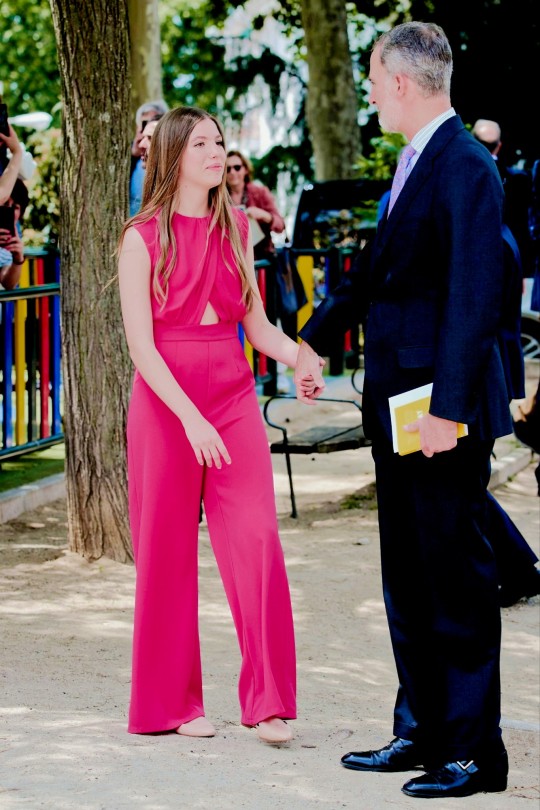
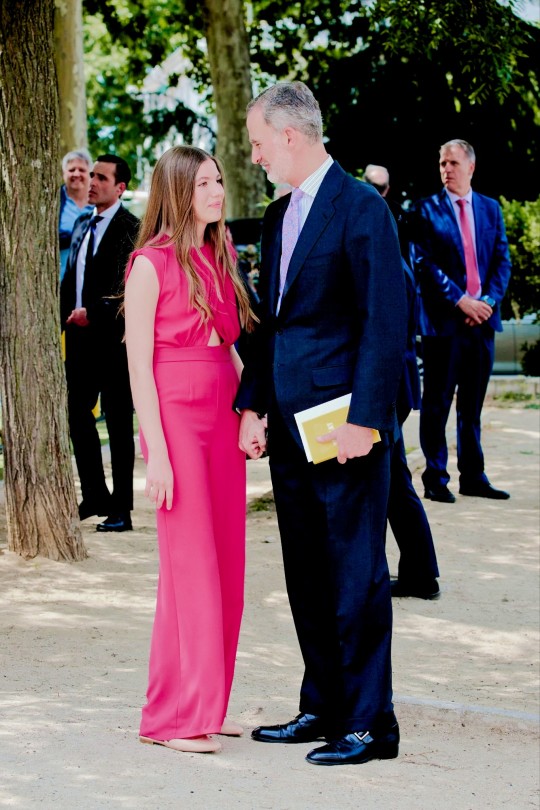
King Felipe VI of Spain and Infanta Sofía of Spain attend Infanta Sofía of Spain's confirmation, at the Asuncion de Nuestra Señora Church in the municipality of Aravaca, in Madrid, Spain -May 25th 2023.
#king felipe#king felipe vi#infanta sofia#spanish royal family#spain#2023#may 2023#confirmation#infanta sofia of spain's confirmation#royal children#my edit
11 notes
·
View notes
Text

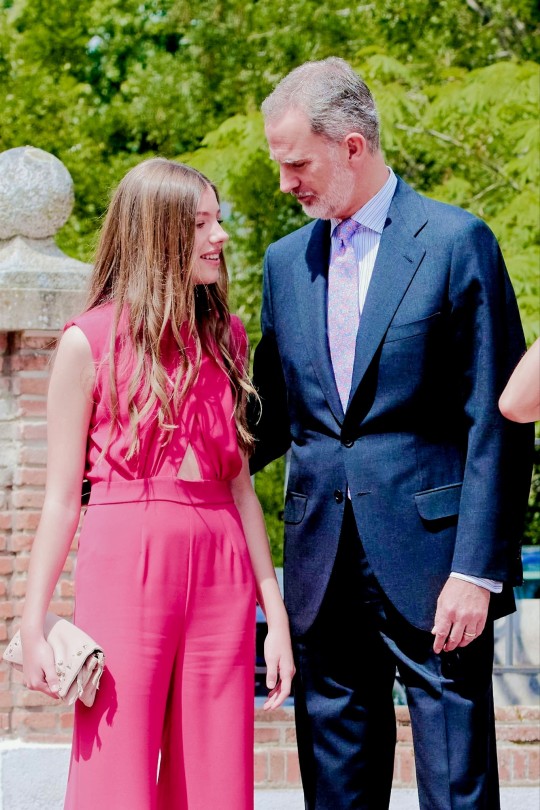
King Felipe VI of Spain and Infanta Sofía of Spain attend Infanta Sofía of Spain's confirmation, at the Asuncion de Nuestra Señora Church in the municipality of Aravaca, in Madrid, Spain -May 25th 2023.
#king felipe#king felipe vi#infanta sofia#spanish royal family#spain#2023#may 2023#confirmation#infanta sofia of spain's confirmation#royal children#my edit
11 notes
·
View notes
Text

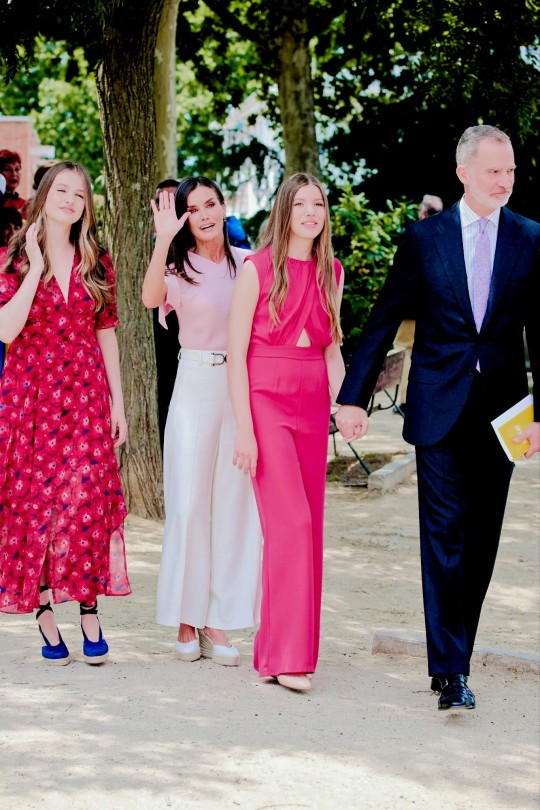

King Felipe VI of Spain, Queen Letizia of Spain, Princess Leonor, The Princess of Asturias and Infanta Sofía of Spain attend Infanta Sofía of Spain's confirmation, at the Asuncion de Nuestra Señora Church in the municipality of Aravaca, in Madrid, Spain -May 25th 2023.
#king felipe#king felipe vi#queen letizia#princess leonor#princess of asturias#infanta sofia#spanish royal family#spain#2023#may 2023#confirmation#infanta sofia of spain's confirmation#royal children#my edit
12 notes
·
View notes
Text


Queen Letizia of Spain and Infanta Sofía of Spain attend Infanta Sofía of Spain's confirmation, at the Asuncion de Nuestra Señora Church in the municipality of Aravaca, in Madrid, Spain -May 25th 2023.
#queen letizia#princess leonor#princess of asturias#spanish royal family#spain#2023#may 2023#confirmation#infanta sofia of spain's confirmation#royal children#my edit
10 notes
·
View notes